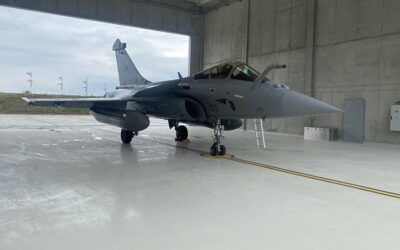DoD Officials Tout Readiness to Congress
Testifying before the House Armed Services Committee’s sub-committee on strategic forces on 8 June, Thomas Harvey, Acting Assistant Secretary of Defense for Strategy, Plans and Capabilities and Vice-Adm. James Syring, Director of the Missile Defense Agency (MDA), stated that the defence system protecting the United States from ballistic missile attacks now outpaces the perceived threat from adversaries out to 2020 and that the Department of Defense (DoD) is advancing the capability to remain ahead of the threat into the future.
“The US homeland is currently protected by the Ground-Based Midcourse Defense system [GMD]. Improving the capacity, reliability and effectiveness of the GMD system is one of our highest priorities,” Harvey explained.
Harvey told the panel that the fiscal 2018 proposed budget — which Syring said in his written testimony requests $7.9 billion for the MDA — would fund a redesigned exo-atmospheric kill vehicle and long-range discrimination radar.
It would also help to lay the groundwork for a new radar in Hawaii, continue funding for advanced discrimination centre technology and space-based kill assessment programmes, and remain on track to complete deployment of remaining interceptors in Alaska by the end of this year, bringing the total to 44, the assistant secretary said.
From a regional standpoint the 2018 budget request continues the deployment of missile defences tailored to threats in Europe, the Middle East and the Asia-Pacific region. “In Europe, we would continue to implement the European Phased Adaptive Approach, EPAA, and work in close collaboration with our NATO allies to develop an advanced network of sensors and interceptors,” Harvey stated. The EPAA addresses the threat from Iranian short- and intermediate-range ballistic missiles to US troops and interests in Europe.
The budget request supports the AEGIS ASHORE system scheduled for deployment in Poland in 2018, Harvey said, noting that NATO allies have committed to spend more than $1 billion on NATO ballistic missile defence (BMD) C2 and many US allies are improving national BMD capabilities. “In the Asia-Pacific, our force posture includes AEGIS BMD-capable ships along with PATRIOT batteries deployed in Japan and South Korea, and the recent deployment of THAAD (Terminal High Altitude Area Defense) to South Korea. We’ve also converted the THAAD battery deployment to Guam to permanent status in response to North Korean threats,” he added.
In his written testimony, Syring said the MDA 2018 budget request will continue the development of reliable, increasingly capable, and state-of-the-art defences against ballistic missiles for the nation, deployed forces, allies and international partners. “Everything that this committee has supported over the last four years,” he told the subcommittee, “has been targeted toward a near-term – which is now part of the programme of record and a fielded set of capabilities – a mid-term and a far-term capability.”
Tim Mahon
























